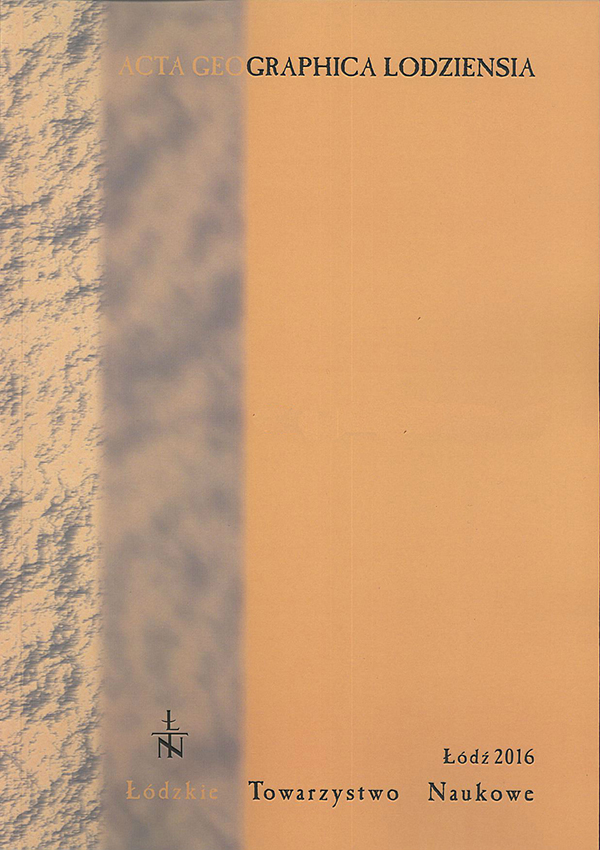Zarastanie jezior Obniżenia Uściwierskiego i jeziora Brzeziczno (Pojezierze Łęczyńsko-Włodawskie)
Terrestrialisation of the lakes in the Uściwierskie Lowering and Lake Brzeziczno (Łęczna-Włodawa Lake District
Author(s): Grzegorz Kowalewski, Sławomir ŻurekSubject(s): Geography, Regional studies, Environmental Geography
Published by: Łódzkie Towarzystwo Naukowe
Keywords: lake overgrowing, lake level fluctuation; lake sediments; Łęczna-Włodawa Lake District
Summary/Abstract: Lake overgrowing is a natural phenomenon considered from a limnological point of view as a lakedisappearing and from a paludological point of view as a process of peat formation. We investigate thisprocess in the lakes located in the Łęczna-Włodawa Lake District, the southernmost lakeland in thePolish lowland (Fig. 1). Geological cross-sections (Fig. 2) were performed at the lakes and adjoiningmires in the Uściwierskie Lowering (lakes: Bikcze, Uściwierz, Rotcze, Sumin) and at Lake Brzeziczno,bordering the Lowering from the west.The depth of the initial lake basins usually exceeded 10 m but at present most of them have alreadybeen infilled with limnic sediments, making the lakes shallow. In the lake basins in the Uściwierskie Lowering, calcareous gyttja prevails, whereas it is absent in Lake Brzeziczno. The spatial distribution of the sediments in the lakes also differs considerably. In the Uściwierskie Loweringthe eastern parts of the lake basins are predominantly deprived of deposits. Their deposition was preventedby the action of wind and wave resulting in sediment removal. This phenomenon is widelydescribed in literature but in our opinion it cannot explain such removal up to the depth of 2 m andmore. We suggest that it was at least partially caused by sediment erosion in the past as a result of lakelevel lowering. There is evidence in Lake Rotcze indicating that sediment deposition was not continuousand a hiatus covers a time span of about 5000 years, Kowalewski (2014). Gyttja deposits inLake Brzeziczno interlayered with brown moss also confirm strong lake level fluctuations in the past(Fig. 2).There are many limnogenic mire complexes at the lakes in the Uściwierskie Lowering and at LakeBrzeziczno, mainly brown-moss mires and to a minor extent Sphagnum mires. In some cases, they encroachon lakes as a floating mat referred to regionally as ‘speja’, whereas a common name in Poland is‘pło’. Patterns of spatial distribution of mires adjoining lakes are similar to those displayed by lakesediments. They develop mainly on coarse-detritus gyttja on the western side of lake basins, whereason the eastern side they are absent and only rushes on sandy gyttja occur. The presence of peat on themineral edge of a lake basin at the depth of 1-2 m suggests lower water levels in the past as well.Irregular patterns of organic sediment distribution and implication hence derived lead to a conclusionthat the only the dynamic concept of hydroseral succession (Kowalewski 2014) instead of thestatic one, assuming a constant water level, allows to explain the development of the lake-mire ecosystemand the process of sediment formation in lakes. Also, the presence of Phragmites peat inside thelake basin should be revised, because its formation has not been evidenced satisfactorily in such places.It was documented only in big river valleys (Jasnowski 1962).
Journal: Acta Geographica Lodziensia
- Issue Year: 2016
- Issue No: 105
- Page Range: 27-37
- Page Count: 11
- Language: Polish

